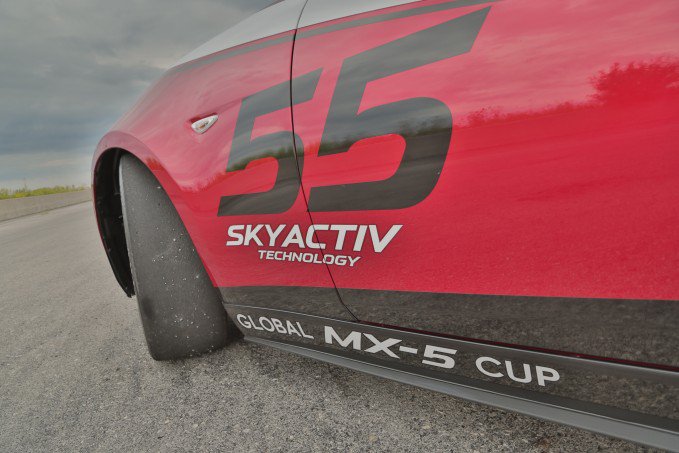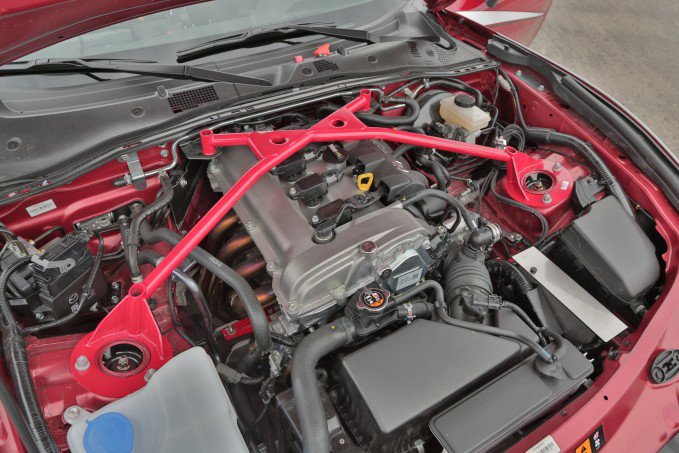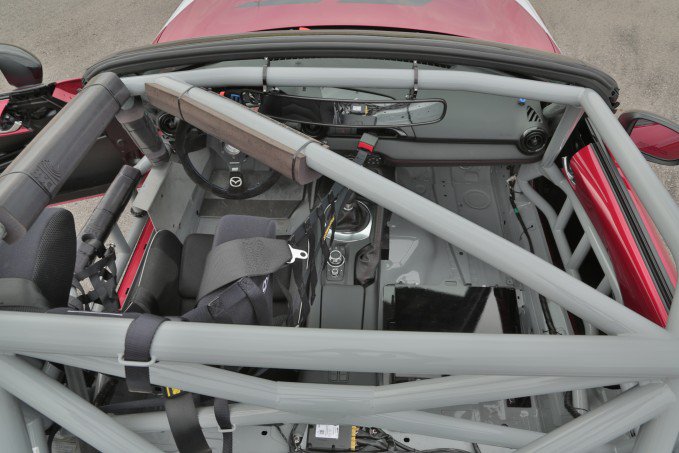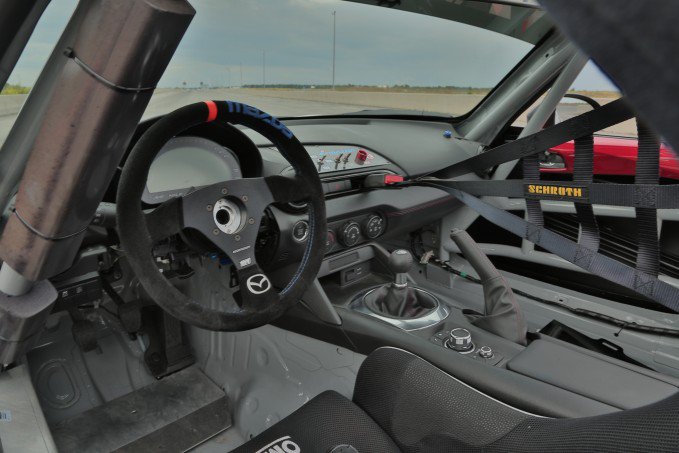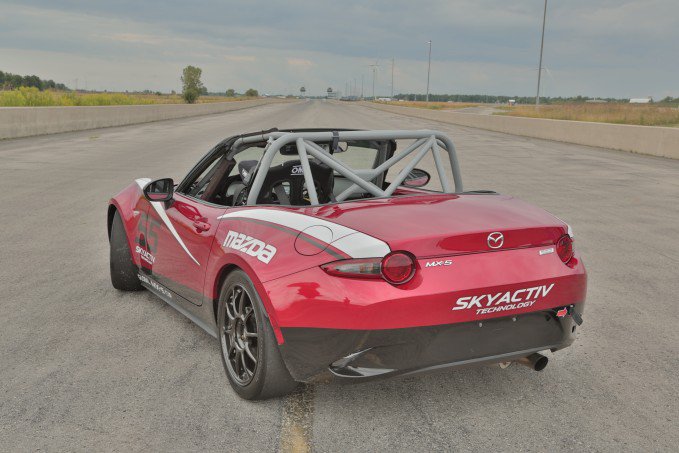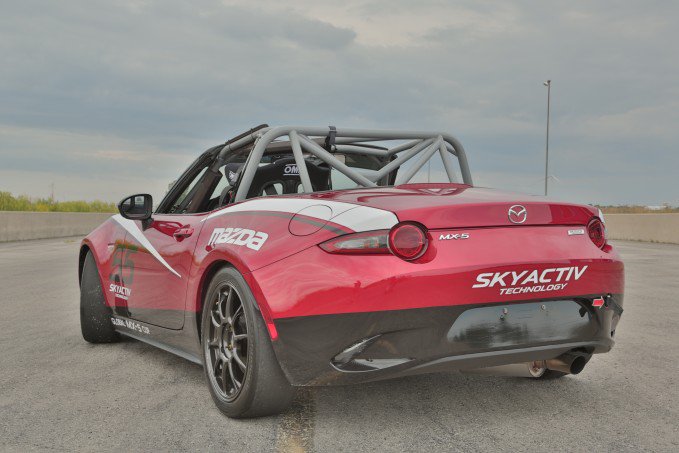The Mazda MX-5 has never been defined by numbers. It never had power. It’s never been a blazing fast car and it never sold in particularly high numbers. Instead it’s been a consistent presence, not just on Mazda showrooms, but on the track as well.
Being on sale for over 25 years, and being offered in many markets across the globe, it was inevitable that the model would hit 1,000,000 sales combined, but looking back, there’s a good chance that a number of those cars have been raced or used in some sort of motorsports.
Since the year 2000, the car has been used in a national spec-series races, and for 2016 the automaker continues the tradition with the new generation race car used in the Global MX-5 Cup series.
Based on the fourth-generation 2016 Mazda MX-5 (known as the ND) the new Cup Car will set racers back about $55,000, but we coerced Mazda Canada – who conveniently had a Cup Car in their fleet – to take the new race car for a spin on our local circuit.
How Fast Will It Be?
For reference, we had a Regular Mazda MX-5 on hand as well, which set a lap time of 1:26.53 around our track last August. That’s not a bad lap time at all, considering it’s faster than cars like the 2013 Subaru BRZ, the 2015 Volkswagen GTI and a Ford Focus ST.
What could we possibly expect around the track with the Cup Car? Looking at the specs, it’s interesting to see how it still has the same power output. The MX-5 has always been a low-power and low-weight car, so adding additional power to the race car would be an inauthentic representation of the road car.
The only significant changes to the car’s engine and drivetrain is the stainless steel headers and full exhaust system that’s designed and developed by Kooks. Admittedly the exhaust is so loud that our audio of me talking while driving was unusable in our video.
Everything else, the engine, transmission, differential is sealed to prevent tampering and gaining an unfair advantage over other participants in the cup car race.
Instead, the changes are to reduce weight, and improve the ride. The interior is pretty much all stripped out, with a roll-cage helping to improve the safety and rigidity of the vehicle. Suspension has been replaced with race-spec components, including adjustable coilovers, race springs and an adjustable front sway bar.
The Cup Car Experience
Listing off the spec sheet like that is a bit of a sterile take on the race car. Let me make one thing very clear, this isn’t a boring experience. Even getting into the car is a joyful, but graceless maneuver. When you swing open the door, you’re greeted with a roll cage that you have to hurdle to get into the car… while avoiding knocking yourself out on the top cross-brace. Once you’re into the heavily bolstered racing seat, which can be adjusted to accommodate drivers that are 6’4″, you have to harness yourself into the car… here’s a pro-tip, close the door before your strap yourself in, or else you won’t be able to reach the door to close it.
Get the Flash Player to see this player.
You fire up the car by flipping a few switches first. Then trigger the ignition and it bursts to life. Now strapped in with my helmet on and the raunchy-sounding four-cylinder buzzing in front of me, the race-car experience is becoming immersive. Clutching in and pegging the gear stick into first is a familiar experience, one I must have done at least a hundred times in the roadgoing 2016 MX-5.
On Track
Throttle response is not only immediate, but immediately familiar too. The car takes off nicely, but without any flair or drama. It’s still powered by a 160-horsepower engine after all. While speed takes a bit of time to build up, maintaining it is a very easy affair, thanks to the amazing grip and handling of the Cup Car.
The BFGoodrich racing slicks need a few laps to warm up though. Driving through the first corner is very concerning, feeling as if the car was on ice! But once they’re warmed up, they are so grippy and responsive, it’s unlike anything I’ve experienced on regular roadgoing tires. The brakes are also extremely good and almost too much for this little roadster.
At the first turn
When I reach the first corner, the usual instinct is to hit the brakes to get some grip into the front wheels so that when you twist the steering, the car responds instead of plowing ahead and careening off the course. However, each touch of the pedal with these amazing brakes can bring the car to a complete halt, meaning I would end up losing all my carefully earned speed.
Instead I put my trust into these now warmed up BFGoodrich slicks. A light tap of the brakes, or slight lift of the throttle puts weight on the front wheels and when I turn the steering wheel, the car just holds on and goes as directed. Doing something like that at speed would result in a terrifying drift in the road car, but the race car sticks to the track with complete confidence.
This approach to corners is what helps the car maintain its speed on the track, but not all turns can be performed with little to no braking. For the ones that do require a lower entry speed, I get to brake so late that I’m practically halfway through the corner before even touching the brakes. It’s so backwards from typical lapping day mannerisms, which require an intricate understanding of car balance and weight transfer. The Cup Car is so grippy and handles so well that it feels like it defies physics.
This process of maintaining speeds through the corners and typically slow portions of the track is what makes driving the MX-5 Cup Car so much fun. Add in the fact that in the MX-5 Cup Car Racing Series, there are usually quite a few cars on track and you get some competitive and exciting racing. In the 2016 MX-5 Global Cup Car Series there are over 50 competitors that have earned points, showcasing just how competitive the series really is.
The Verdict: 2016 Mazda MX-5 Cup Car Review
After spending the day lapping, it came as no surprise that the MX-5 Cup Car was significantly faster than the road car. With a recorded lap time of 1:21.2 the Cup Car was not only faster than the road car, but among the top ten fastest cars we’ve ever tested at the track, beating out cars with over twice as much power as the plucky Mazda. While it’s clearly not the most powerful thing we’ve tested on the track, it’s easily among the fastest.







